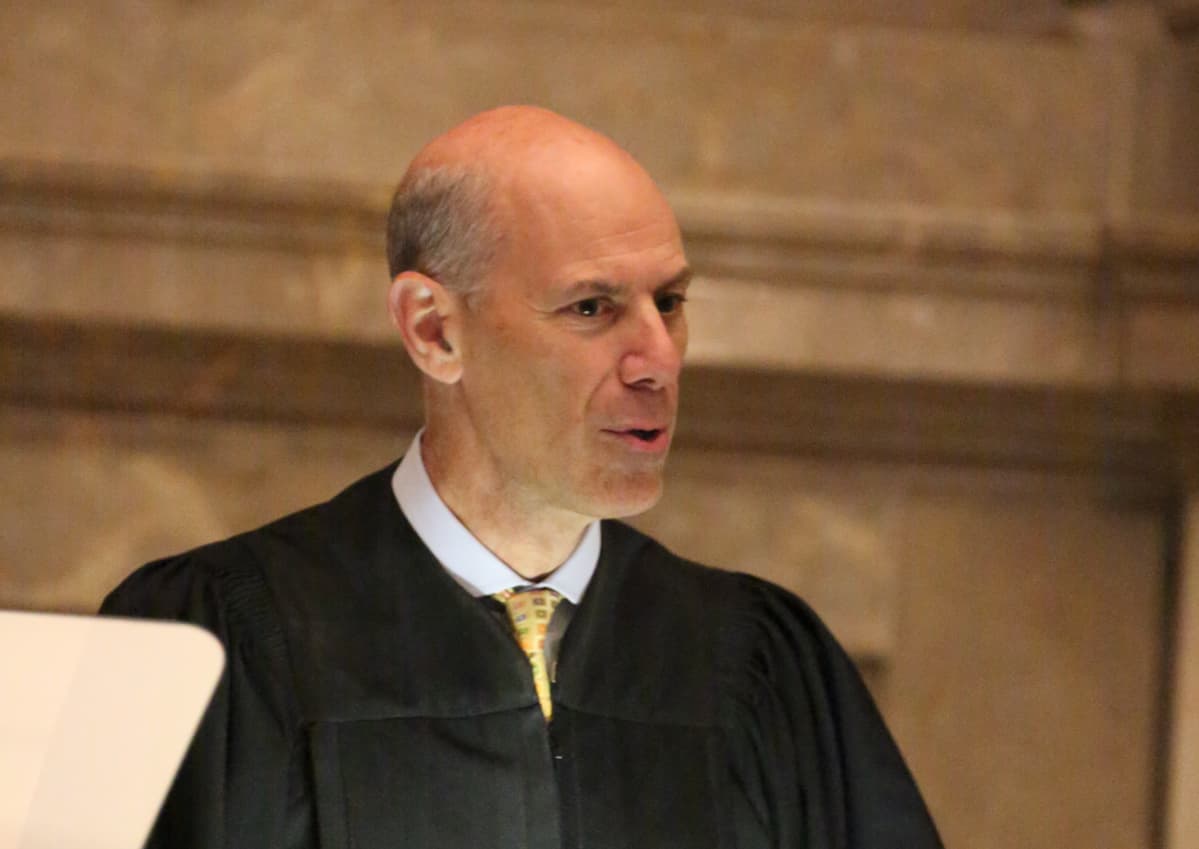Amid Trump’s Judicial Clashes, Press Has Responsibility To Report Which Presidents Nominated Judges to Bench
Since 2013, when Senate Democrats eliminated filibusters for lower court judicial appointments, far more judges owe their seats to party-line confirmation votes.

As President Trump’s administration has moved aggressively to reshape the federal government, Democrats have looked to the federal courts to block him. Who, though, are the judges deciding these high-stakes disputes?
Journalists have done an inconsistent job answering that question. There is a simple way to do better: Identify which presidents nominated the judges calling the shots.
We surveyed coverage in 2025 of more than 30 judicial decisions by seven national news organizations. Overall, one-third of the stories didn’t name the president who nominated the judge deciding the case. None of the news organizations were consistent.
For instance, when Judge George O’Toole Jr. of Massachusetts temporarily paused an administration buyout offer for federal employees on February 6, the Washington Post, the Associated Press, and USA Today did not report that he was nominated by President Clinton. Six days later, Judge O’Toole allowed the buyout to proceed. This time, the Post, the AP, and USA Today did state that Mr. Clinton nominated him. The New York Times covered both rulings but neither story disclosed who nominated Judge O’Toole.
When a district judge, Anthony Trenga of the Eastern District of Virginia, declined to issue a temporary restraining order blocking Mr. Trump from firing DEI workers at the intelligence agencies, the Washington Post, Reuters, and Politico reported that he’d been appointed by President George W. Bush but the New York Times and USA Today did not.
Recently, a three-judge panel of the United States Court of International Trade ruled that Mr. Trump’s “Liberation Day” tariffs were unconstitutional. The New York Times quoted Judge Jane Restani and identified her as a Reagan appointee, but didn’t report that Judge Timothy Reif was a Trump appointee or that Judge Gary Katzmann was appointed by President Obama.
The Wall Street Journal quoted Judge Restani but named no appointing presidents of any of the judges, and didn’t even name the other two judges. The Washington Post, the AP, and Politico named all three judges and the presidents who appointed them.
In a recent op-ed piece, a former Times Supreme Court reporter, Linda Greenhouse, argues for identifying nominating presidents because readers may be reassured about the rule of law when Republican judges decide against Mr. Trump.
Yet this tortured rationale overlooks the far more basic and straightforward First Amendment rationale: Readers deserve to have the information they need to hold presidents accountable for their nominees and the decisions they make.
Since 2013, when the Democratic Senate majority eliminated filibusters aimed at blocking lower court judicial appointments, far more judges owe their seats to narrow party-line confirmation votes.
A party-line confirmation vote is only a crude predictor of how a judge will rule, and many judges deplore the demystifying suggestion that the political chronicle of their ascent to the bench is relevant to their actions once they get there. Yet in many cases, a partisan confirmation vote does provide a pretty good indication of how the opposition party viewed the nominee.
For concrete perspective, we reviewed data provided by the Administrative Office of the United States Courts showing the Senate confirmation vote for every active federal judge.
Of the nation’s 634 active federal district court judges, 209 were confirmed by fewer than 60 votes, and 196 of these judges were nominated by Mr. Trump or President Biden.
None of Mr. Bush’s 75 active district court nominees were confirmed by fewer than 60 votes; only 13 of Mr. Obama’s 182 active nominees were. Closely divided confirmation votes picked up steam with Mr. Trump’s nominees to the district courts and exploded with Mr. Biden’s. About 30 percent of Mr. Trump’s active district court nominees were confirmed by fewer than 60 votes, compared with three quarters of Mr. Biden’s.
Meanwhile, nearly half of all active federal appeals court judges were confirmed by fewer than 60 votes: 72 percent of Mr. Trump’s nominees and 78 percent of Mr. Biden’s.
Mr. Trump isn’t the first president to take an expansive view of executive authority. Mr. Biden stretched environmental laws and tried to cancel unilaterally up to $400 billion in student loans. At that point, Republicans were the ones running to the courthouse. So federal judges with partisan confirmation pedigrees will be refereeing political cases long after Mr. Trump leaves the White House. Readers deserve to know who put them on the bench.
